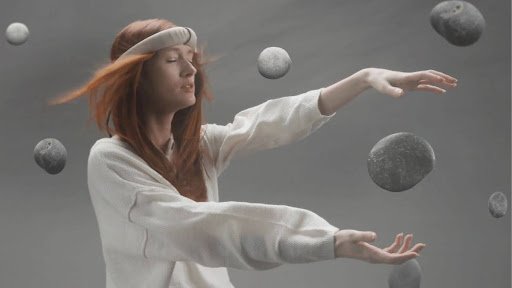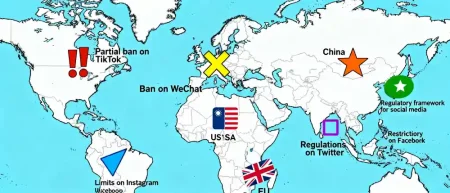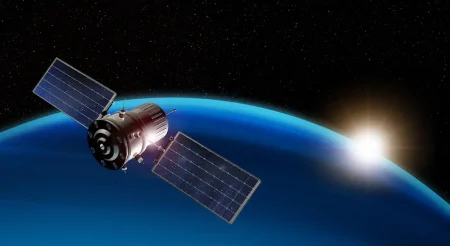By sending precise sound waves into specific brain regions to stimulate neural activity, Prophetic is offering a new tool in the growing category of “consciousness tech.”
Welcome to part three of dreamtech’s weird little evolution. If you missed the first two, here’s the quick catch-up: In 2024, we posted about a device that could reconstruct dream visuals using fMRI data and diffusion models, basically turning your sleep hallucinations into short films. Then in 2025, we posted about communicating with lucid dreamers in real time.
Now, we’ve got something that sounds straight out of science fiction: the “prophetic halo,” a neural interface that nudges users into hyper-detailed lucid dreams. While it isn’t reading your thoughts or predicting the future (yet), it is nudging your brain at just the right moment to spark lucidity. By sending precise sound waves into specific brain regions to stimulate neural activity, Prophetic is offering a new tool in the growing category of “consciousness tech.”
Under the Hood

Prophetic Halo packs a surprising amount of tech into a sleek headband. At its core are two temple-mounted ultrasound transducers aimed at the dorsolateral prefrontal cortex (dlPFC), an area key to self-reflection and decision-making. Using tFUS (Low-intensity transcranial focused ultrasound), Halo delivers gentle pulses that “wake up” this sleep-quieted region, kind of like shining a flashlight on your frontal lobes, right when EEG sensors detect REM sleep. This closed-loop system relies on an ML model trained on correlated EEG and fMRI data, so the headband can infer deep-brain activity from surface signals alone.
It’s a dance of hardware and data: EEG tells it when to pulse; the ultrasound tells it where to target. Early experiments have shown significant increases in lucid-dream frequency and duration, all without jolting users awake. It’s a masterclass in non-invasive neuromodulation, one part neurostimulation, one part AI prediction.
Beyond the electronics and code, Halo’s success hinges on precision. The team uses fMRI to map the exact dlPFC activation during lucid episodes, then translates that map into EEG signatures. That lets Halo know when to fire its ultrasound “flashlight,” boosting the odds you’ll realize you’re dreaming.
The device’s design, led by Card79, the studio behind Neuralink’s N1, balances comfort with accuracy, keeping sensors snug and stable through the night. And because it streams data to a companion smartphone app, every session refines the ML model further, tailoring stimulation to each brain’s quirks. It’s iterative science in action: dream, record, adjust, repeat. As we edge closer to reliable induction, the once-fantastical notion of hacking REM sleep feels astonishingly real.
AI-powered Dreams
While the “prophetic” name might suggest some kind of “fortune-telling,” the Halo isn’t making predictions about the future. Instead, it’s using AI to improve the timing and targeting of brain stimulation in order to increase lucid dream likelihood. The dream content itself? That still comes from your own brain. So while it’s a cool use of AI in neurotech, it’s not generating sci-fi visions or calculating your destiny. At most, it’s giving you a better shot at realizing when you’re dreaming.
The only role AI plays here is to track sleep stages and customize the overall neural stimulation experience. It also uses machine learning to interpret EEG data and determine the optimal window for tFUS activation. The idea is to personalize the timing of interventions to the user’s unique sleep patterns, which may vary night to night.
As of now, the Prophetic Halo sits at the intersection of neuroscience, wearable tech, and consciousness research. What it’s really offering is a tool, still experimental, that might help you gain more agency over your dreaming life. With collaborations underway at serious research institutions and a focus on noninvasive, real-time stimulation, it’s a grounded attempt at something people have been chasing for centuries: lucid dreams on demand. As with any early-stage neurotech, skepticism is warranted and results will vary. But unlike the wilder dreamtech claims floating around online, the Halo is at least transparent about what it does and doesn’t do. It doesn’t read your mind. It doesn’t write your future. It just tries to wake you up a little, while you’re still asleep.
Consciousness tech
In conclusion, while the Prophetic Halo may have a name that flirts with science fiction, what it’s actually doing is far more grounded, and arguably more impressive. It’s a carefully engineered headband designed to fulfill a modest goal that taps into a centuries-old human obsession: gaining awareness inside our dreams. With early studies showing promising results and machine learning steadily refining its timing, Halo could nudge lucid dreaming from mystical rarity to regular sleep feature.
Of course, it’s not magic, just a clever mix of neuroscience and machine learning. So if you’re hoping to glimpse the stock market’s future while you nap, you’ll be disappointed. But if you’re curious about gaining a bit more clarity inside your nightly hallucinations? This might be the most honest dreamtech yet.
In case you missed:
- Scientists establish two-way Lucid Dream communication!
- Lab-Grown Brain Thinks It’s a Butterfly: Proof We’re in a Simulation?
- Could Contact Lenses be the Key to Fully Wearable BCIs?
- ChatGPT-Psychosis: Lower focus, warped emotions, rising delusions!
- Netflix replaces its game developers with AI
- NVIDIA’s Isaac GR00T N1: From Lab Prototype to Real-World Robot Brain
- China’s just created an AI-powered Inspector for Nuclear Disarmament!
- Spiralism: The Cult-Like Belief System Emerging from AI
- AI Uncovers Thousands of Potential Psychedelic Compounds!
- Pi Coin vs Bitcoin: Round 2, Mainnet Launch










